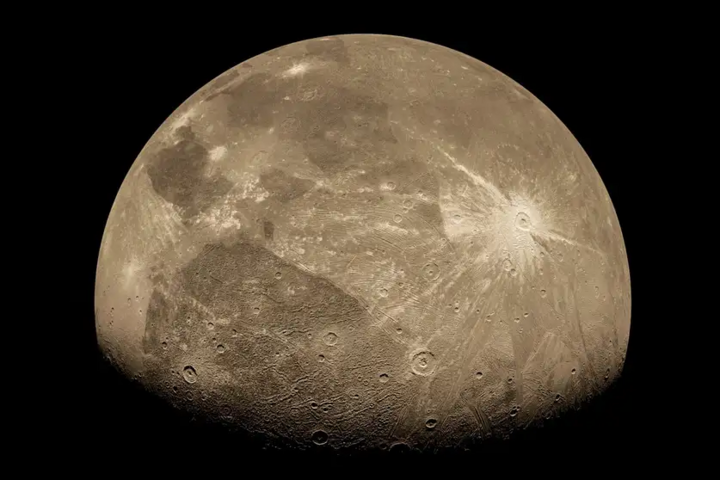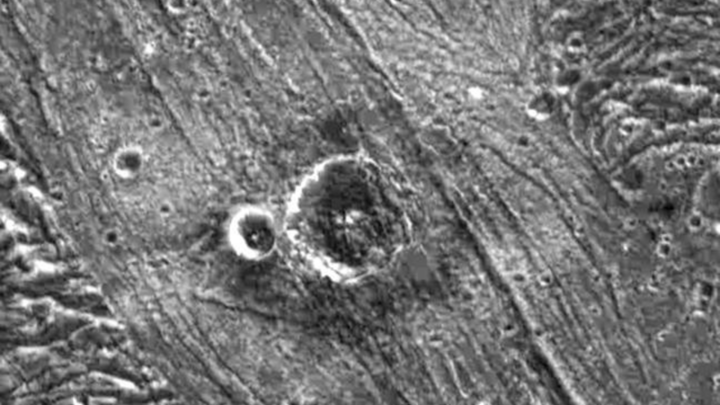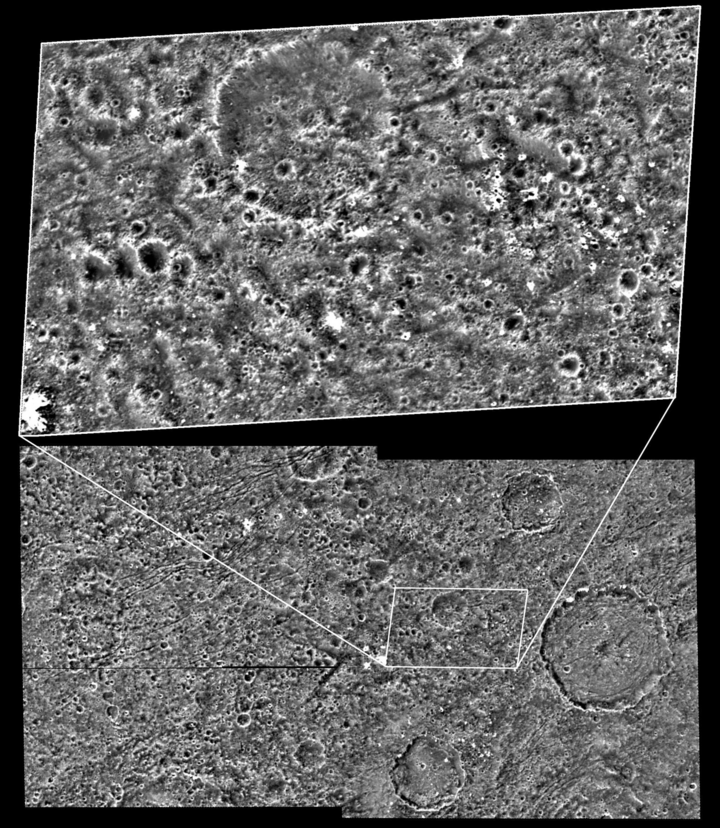Ganymede, Jupiter's largest moon and the largest moon in the solar system, could act as a giant dark matter detector. Physicists think that large dark matter particles, if they exist, could create distinctive craters on Ganymede's icy surface.

A view of Ganymede from NASA's Juno spacecraft. (Source: NASA)
Scientists typically look for dark matter in the form of ultralight particles that interact very weakly with regular matter. However, another theory suggests that dark matter could exist in the form of very large particles – ranging from the size of basketballs to asteroids – that are extremely rare and difficult to detect.
Because large dark matter particles are rare, detecting them requires a detector the size of a giant moon or planet. Ganymede, with its ancient and largely unaltered ice surface, is an ideal candidate to preserve traces of these rare collisions.
Future space missions may be able to detect unique craters created by dark matter. If found, this would be important evidence for the existence of a new type of dark matter and open up entirely new research directions in astrophysics.

Distinctive impact crater on Ganymede. (Source: NASA)
Dark matter is a form of matter that does not emit light or any type of radiation that we can detect with telescopes. Although it cannot be seen directly, scientists believe it exists because of its gravitational influence on galaxies and objects in the universe.
Galaxies rotate faster than their visible mass can explain. This suggests that there is a large amount of “hidden” matter gravitationally holding them together. Dark matter makes up about 85% of the total mass of the universe, but we only understand a small fraction of it.
Dark matter is incredibly important in the universe – not because we understand it, but because it governs how the universe works.
Based on the masses of the stars and planets we see, galaxies should collapse as they rotate. But they are actually stable – suggesting that there is an additional gravitational pull from dark matter holding them together.
Soon after the Big Bang, dark matter helped form galaxy clusters, galaxies, and other large structures. Without dark matter, the universe would not look like it does today – it would just be a thin cloud of gas.

The dark surface of Ganymede - where the history of collisions is preserved. (Source: NASA)
Because dark matter does not interact with light, but has a strong gravitational influence, it could help us test and extend current physical theories such as relativity or the standard model of particle physics. The discovery of dark matter could lead to the discovery of new elementary particles, or even extra dimensions. It is a gateway to expanding human understanding of the nature of the universe.
Missions like NASA’s Ganymede probe are searching for traces of large dark matter – particles that could have created the distinctive craters on the moon’s icy surface. If found, it would be a game-changer for astronomy.
Source: https://vtcnews.vn/ganymede-thiet-bi-do-vat-chat-toi-tu-nhien-ar960424.html
























![[Photo] Prime Minister Pham Minh Chinh attends the opening ceremony of the National Data Center](https://vphoto.vietnam.vn/thumb/1200x675/vietnam/resource/IMAGE/2025/8/18/b5724a9c982b429790fdbd2438a0db44)










































































Comment (0)